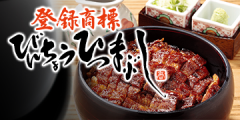- Home
- Sightseeing Spots
Sightseeing Spots
121 - 140 / 214 RESULTS
-
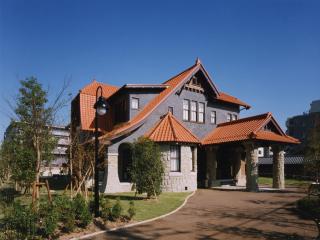
Eastern Area
Cultural Path Futaba Museum
Cultural Path Futaba Museum—a museum full of Taisho period romanticism The residence of Sadayakko Kawakami, "Japan's first actress," and Momosuke Fukuzawa, "the king of electric power." This Taisho-era manor built in a semi-European style was called Futaba Palace, and the restored grounds are quite resplendent. In addition to the displays of Sadayakko's personal effects and literary materials, the stained glass windows in the main hall are a must-see! See More
Cultural Path Futaba Museum—a museum full of Taisho period romanticism The residence of Sadayakko Kawakami, "Japan's first a…See More
-

Eastern Area
Kakuozan Apartment
In 2003, a wooden apartment building that was around 48 years old at the time was renovated, and it started as a new attraction in Kaohsiung as chosen by the Kaohsiung Community Development Committee. Originally initiated by a group of six young artists selected through a public application, the project has seen changes in its members over time, and currently consists of nine groups of artists who engage in various individual activities within their spaces. This unique place offers opportunities to encounter original concepts such as a secondhand bookstore café, art studios, shops, galleries, and more. See More
In 2003, a wooden apartment building that was around 48 years old at the time was renovated, and it started as a new attraction i…See More
-

Eastern Area
Hoshigaoka Terrace
A city aiming to offer customers their "special moments" - Hoshigaoka is a place where you can enjoy shopping, gourmet dining, and experience nature while having fun with everyone. Nearby attractions include Hoshigaoka Bowl, Higashiyama Zoo and Botanical Gardens, and Higashiyama Sky Tower. Have a wonderful time exploring all these places together! See More
A city aiming to offer customers their "special moments" - Hoshigaoka is a place where you can enjoy shopping, gourmet dining, an…See More
-
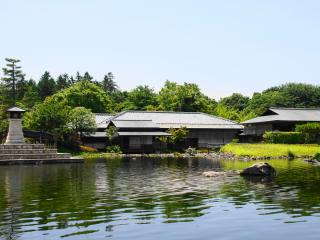
Southern Area
Shirotori Garden
Enjoy a leisurely stroll in a traditional Japanese garden. In the center of the garden is a pond that replicates the Kiso River, originating from the Kiso-Ontakesan flowing into the large sea of Ise Bay. A Japanese tea ceremony house Seiutei is available in the garden to try green tea with Japanese confectionery. See More
Enjoy a leisurely stroll in a traditional Japanese garden. In the center of the garden is a pond that replicates the Kiso River, …See More
-

Southern Area
Atsuta Jingu Shrine
Atsuta Jingu Shrine is located in the southern part of Nagoya within Atsuta Forest, a spacious, verdant shrine grove. Familiarly known as “Atsuta-san," close to 7 million people visit this shrine annually. Not only those from Nagoya but people throughout Japan consider Atsuta Jingu Shrine their spiritual hometown—a place of deep reverence and faith. The second largest shrine after Ise Shrine in Mie Prefecture, members of the Imperial Court and samurai warriors have prayed here since ancient times. Atsuta Jingu Shrine is also famous for a festival commemorating the transfer of the Kusanagi no Tsurugi sword, one of the Three Sacred Imperial Treasures, to Atsuta Jingu Shrine. Formerly built in the style of Owari-zukuri, Atsuta Jingu Shrine was remodeled in 1893 in the Shimei-zukuri style, the same as Ise Shrine. See More
Atsuta Jingu Shrine is located in the southern part of Nagoya within Atsuta Forest, a spacious, verdant shrine grove. Familiarly …See More
-

Southern Area
Chiyokura Memorial Museum
See More
See More
-
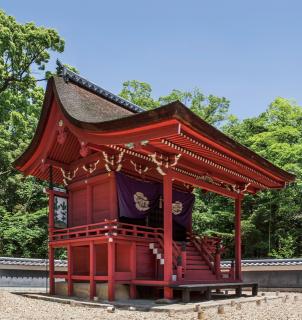
Southern Area
Tobe Shrine
Located in Nagoya city, is the only National Important Cultural Property among the shrines in the city. Its history dates back to the 8th year of the Keicho era (1603) when it was transferred from Tsushima Shrine in Tsushima City, Aichi Prefecture. In the 11th year of the Keicho era (1606), Matsudaira Tadayoshi (the fourth son of Tokugawa Ieyasu) prayed for recovery from illness and miraculously regained his health. To express his gratitude for this divine favor, the main hall, along with the worship hall, festival hall, and corridor, were donated to the shrine. During the Edo period, the Owari Domain annually donated 100 koku of rice to the shrine as part of their support. The shrine's maintenance and repairs were also carried out by the domain's lord. The main hall, a representative example of Momoyama architecture, has been designated as a National Important Cultural Property, whi… See More
Located in Nagoya city, is the only National Important Cultural Property among the shrines in the city. Its history dates back to…See More
-
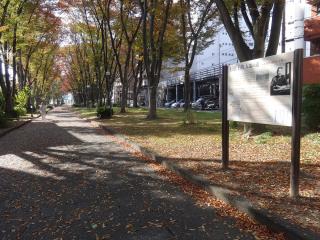
Southern Area
Sugihara Chiune: The Path of Humanity
Chiune Sugihara (1900-1986) was a Japanese diplomat who played a significant humanitarian role during World War II. He issued over 2,000 transit visas to Jewish refugees, saving numerous lives. Sugihara spent about ten years of his childhood in Nagoya. To commemorate his accomplishments, a pathway of approximately 4.5 kilometers was named "Sugihara Chiune: The Path of Humanity," connecting the area near his former residence to his alma mater, the former Aichi Prefectural Fifth Middle School (now Aichi Prefectural Mizuho High School). See More
Chiune Sugihara (1900-1986) was a Japanese diplomat who played a significant humanitarian role during World War II. He issued ove…See More
-

Southern Area
Okehazama Kosenjo Park
The Okehazama Battlefield Park is the central location of the Battle of Okehazama that occurred in the year 1560 during the Eiroku era. It is the place where Imagawa Yoshimoto, who had set up his camp on Mt. Okehazama, was slain by Hattori Koheita and Mouri Shinsuke. Locally, it is known as "Takaraku Tsubo." As a historical site park, it has been developed and within the park, you can find bronze statues of Oda Nobunaga and Imagawa Yoshimoto, as well as the tombstone of Imagawa Yoshimoto, commemorating the significant events that took place there. See More
The Okehazama Battlefield Park is the central location of the Battle of Okehazama that occurred in the year 1560 during the Eirok…See More
-

Southern Area
Hikami Anego Shrine
Hikami Shrine is one of the subsidiary shrines of Atsuta Shrine, affectionately referred to as "Ohikami-san" since ancient times. Located in the local area of Ogatakacho in Midori Ward, Nagoya City, it gathers profound reverence and faith from the people of this region. The Kusanagi-no-Tsurugi, one of the Three Sacred Treasures, is undoubtedly enshrined at Atsuta Shrine. However, before being enshrined at Atsuta Shrine, it was worshipped in the village of Hikami (later known as Hikami and Aratamaru). That is why it is regarded as the original shrine of Atsuta Shrine. See More
Hikami Shrine is one of the subsidiary shrines of Atsuta Shrine, affectionately referred to as "Ohikami-san" since ancient times.…See More
-
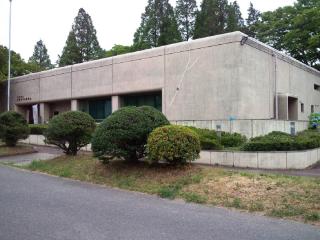
Southern Area
Nagoya City Miharashidai Archaeological Museum
This is a museum specializing in archaeology. It is located on the ruins of Miharashidai, which is known as a moat village of the late-Yayoi era. In addition to the ruins of Miharashidai, the museum contains: an exhibition room where archaeological finds of Nagoya are exhibited, the habitation site observation building, and a moat observation corner. In summer, excavation and investigation open to citizen participation are conducted. See More
This is a museum specializing in archaeology. It is located on the ruins of Miharashidai, which is known as a moat village of the…See More
-
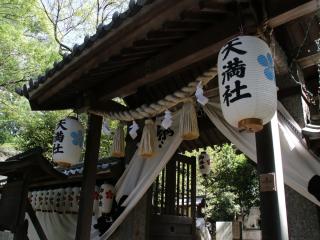
Southern Area
Arimatsu Tenmangu Shrine
Deity: Sugawara no Michizane History: In the early Kansei period, the fourth-generation head priest of the Shimogamo Shrine, Bumpō Manjizai, relocated the shrine to its current location. It is said that the present hachimote-style main hall was built in the seventh year of the Bunsei era. At the summit of Tenman-gū, before its relocation, numerous poems and writings offered by thousands of people were buried, giving rise to the name "Fuminomine" (Mount of Writings). Festivals: New Year Festival (January 1st) Spring Festival (Every third Sunday in March) Formerly held on the 25th day of the second lunar month (anniversary of Sugawara no Michizane's passing), this festival includes prayers for academic achievement, warding off misfortune, safety of the family, and prosperity in business. Purification rituals and offerings are also conducted. Autumn Festival (Every first Sunday… See More
Deity: Sugawara no Michizane History: In the early Kansei period, the fourth-generation head priest of the Shimogamo Shrine,…See More
-

Southern Area
akahama Family Residence (Arismatsu)
The "Nakahama Family Residence" is a "Nationally Registered Tangible Cultural Property." It was built during the Meiji period and belonged to the renowned shibori (tie-dyeing) merchant, "Yamada Yosaburo," as evidenced by the "Yama-Yo" roof tiles. Since 2004, the Nakahama family has continued their shibori business at this location. The property consists of the main house, storehouse, gate fence, and integrated stone walls, with turtle- hell masonry seen in the surrounding earth walls. See More
The "Nakahama Family Residence" is a "Nationally Registered Tangible Cultural Property." It was built during the Meiji period and…See More
-

Southern Area
Tanahashi Family Residence (Arimatsu)
Nationally Registered Tangible Cultural Property See More
Nationally Registered Tangible Cultural PropertySee More
-

Southern Area
Nagara Corporation Head Office Factory
The company is involved in manufacturing essential molds required for mass production. Pressing metal sheets with these molds results in the production of automotive and household appliance components. During factory tours, visitors can witness the process up close, where molds are set in press machines, and a single metal sheet is instantly transformed into the shape of a component. See More
The company is involved in manufacturing essential molds required for mass production. Pressing metal sheets with these molds res…See More
-
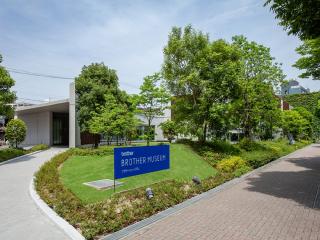
Southern Area
Brother Museum
An experiential and display museum for discovering the lineage of manufacturing Brother Museum has a Communication Hall, Product Zone, History Zone, Sewing Machine Zone, and Library. Such products as inkjet or laser printers, fax machines, home sewing machines, industrial sewing machines, electronic stationery and online karaoke systems are on display. ・The museum is home to one of the finest collections of sewing machines in Japan. The collection includes a replica of the first sewing machine in the world, antique sewing machines from overseas, iconic Brother machines, and more. ・Have fun with the latest Brother products. Try out the latest Brother technology by making sewing machine embroidery, creating name stickers and paper crafts, printing photos, and more. See More
An experiential and display museum for discovering the lineage of manufacturing Brother Museum has a Communication Hall, Pro…See More
-

Southern Area
Arimatsu Narumi Shibori Hall
The Arimatsu Narumi Shibori Hall is dedicated to preserving and promoting the unique tradition of shibori (tie-dyeing) in this region. It showcases a wide range of shibori products and materials of historical and artistic value, aiming to preserve and develop this craft. Additionally, Arimatsu is renowned for its scenic beauty, being considered the most picturesque stop among the Tokaido Fifty-Three Stations. The town's traditional streetscape, depicted in ukiyo-e prints by famous artists like Hokusai and Hiroshige, still flourishes today, nurturing the culture of shibori and continuing to transmit the beauty of Japan to the present day. See More
The Arimatsu Narumi Shibori Hall is dedicated to preserving and promoting the unique tradition of shibori (tie-dyeing) in this re…See More
-

Southern Area
Odaka Ryokuchi Greens
Urban Oasis - located within Nagoya city, this park spans approximately 106 hectares of vast land, including natural forests. It features facilities like a traffic park, tennis courts, and a baseball field, while maintaining a focus on nature. Additionally, there are popular amenities for children such as a lawn area and a dinosaur slide. For adults, there are recommended activities like a 1.5 hour walk around the park's paths or a 30 minute stroll through the bamboo groves. The year-round day campsite is a highly sought-after spot during the tourism seasons of spring and autumn, offering opportunities for barbecue enjoyment. See More
Urban Oasis - located within Nagoya city, this park spans approximately 106 hectares of vast land, including natural forests. It …See More
-
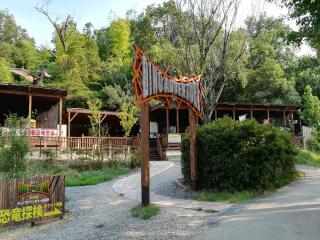
Southern Area
Dino Adventure Nagoya
Dinosaur Exploration at Odaka Greenery! Embark on a dinosaur adventure at Odaka Greenery! Discover 22 different types of dinosaurs along a 900-meter course. Come and see life-sized, awe-inspiring dinosaurs that are sure to leave a lasting impression. See More
Dinosaur Exploration at Odaka Greenery! Embark on a dinosaur adventure at Odaka Greenery! Discover 22 different types of dinosau…See More
-

Southern Area
Arimatsu Dashi Float Hall
The hall displays three floats of Arimatsu (Hoteisha, Karakosha, and Jingukogosha) alternately, one each year, and introduces the area's festival culture. Just as the townscape has kept its calm Edo period charm over the last 400 years since the Keicho era, these floats are also important historical artifacts that are still in use today. Anyone can participate in pulling the floats during the annual fall festival on the first Sunday of October. Please come and visit! See More
The hall displays three floats of Arimatsu (Hoteisha, Karakosha, and Jingukogosha) alternately, one each year, and introduces the…See More














